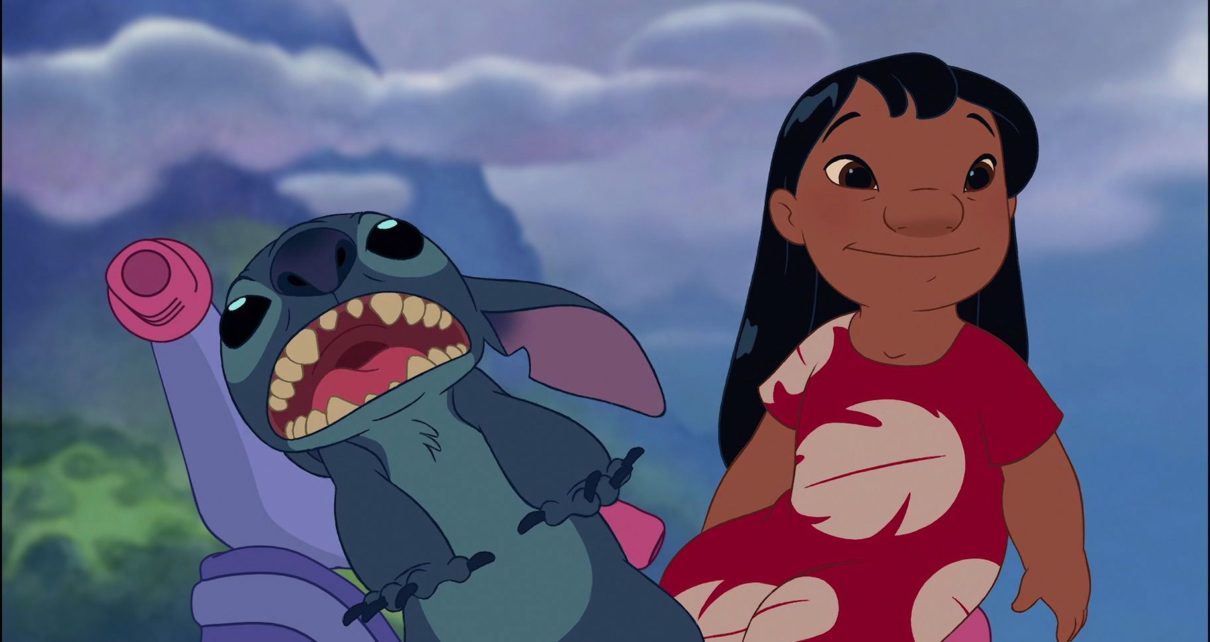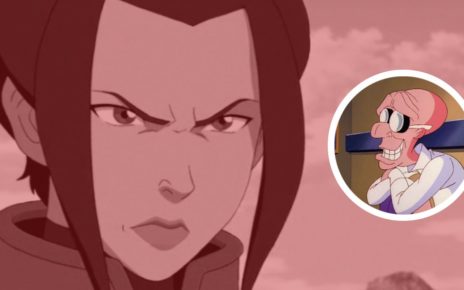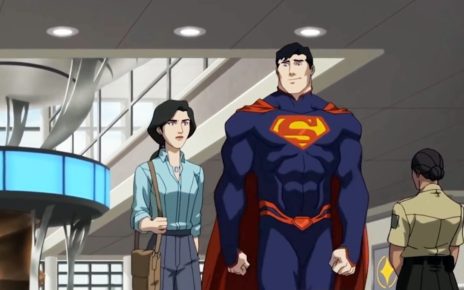Stitch is just a little blue baby filled with unbridled rage and emotion, in need of love and attention, shooting out spitballs at people and raging in a cage in protest. Within mere minutes of the beginning of Disney’s Lilo and Stitch, this is the first depiction we’re given of its eponymous alien—and when first introduced, he’s said to have wreaked so much havoc and seems so out of control that he’s caused multiple council members on the main spaceship before he’s exiled to Kaua’i, Hawaii, where he has landed from outer space, to ask, “what is that monstrosity?”
As an abused eight-year-old child often called a nuisance by people who misunderstood my behavior, I deeply related from the first moment I saw the movie. I already felt like an alien to everyone around me, you know, minus being blue and snarling up spit balls. People often called me bad. And so I thought, of course, that I was bad.
At the beginning of the movie, Stitch, too, is so clearly positioned as bad—showcased as the anti-hero, or so we’re meant to think. The scientist Dr. Jumba Jookiba, who created Stitch, explains that he was made to be exactly that—a monstrosity, an agent of chaos, “his only instinct: to destroy everything he touches!” But it takes the tiny blue alien being exiled to Earth for us to learn that Stitch is not actually evil, even if he was created with that intention in mind.
Throughout the movie, we realize Stitch is merely unsure of his identity, purposeless aside from the purpose his creator had thrust upon him. He lacks rootedness. He has strong feelings he doesn’t know how to externalize. Me too, Stitch, me too, the eight-year-old alien me thought.
In his human companion, Lilo, he finds a friend who understands and externalizes similar rage and yearning for connection—and who has also been labeled bad, or Too Much. As a young kid, I saw myself in Lilo, too. Like both title characters, I could not simply be “reasoned with” and calmed down enough to rationally deal with life.
Growing up, I was experiencing intense traumatization on a regular basis, including emotional and verbal abuse from both parents and physical violence from my mother. While I didn’t have the words or context to know this wasn’t my fault, what I internalized from these experiences was that bad things were happening to me, and that they must have been happening to me because I was bad. As an adult, I of course now understand that correlation is not causation. But as a child, this was the only logical explanation. So I acted out. I was an anxious child who didn’t know how to deal with her emotions, crying in class too much sometimes or lying down on the basketball court on the playground instead of using it for its intended purpose.
While the traumas and difficulties I’ve experienced are different than those Lilo and Stitch respectively experience in the movie, their responses to hardship felt familiar to me. When Lilo plops on the floor and angstily sings Elvis, locks her sister out of their home, and makes Voodoo dolls of the girls bullying her at school, I intimately felt the pull towards chaotic behavior–the pull towards being a mess and not only accepting it, but running with it. Lilo is tortured but creative, misunderstood by those who think she’s trying to be a nuisance. This is the opposite of who she really is, which I saw clearly: a little kid trying to find some way to process her feelings and find relief.
In one particularly memorable moment from my early life, I was “acting out” in third grade, being moody at recess and isolating myself in class. My teacher, Miss Gibson, decided that she needed to “reason” with me, so she tried giving me a journal and asked me to write about what I was feeling and thinking in it—anything that was going on at home or school that was bothering me—because it might help me explain to her why I was so angsty and showing signs of being “troubled.” Spoiler alert: I, like both Lilo and Stitch, didn’t want to be reasoned with. I wanted to hold onto my emotions, and I also wanted to get them out. But I didn’t want to give them over to anyone. I didn’t write in the notebook.
While this isn’t an extreme example of a time I exhibited behavior others might deem monstrous, it was one of the many times in which someone called me troubled first without trying to see me from a different angle. As a result, my reaction leaned toward stubbornness and lack of desire to cooperate with someone who made me feel alien instead of cared for— someone who wanted to “fix” me instead of love me until I was strong enough to be the best version of myself.
Throughout my childhood, when people tried to “tame” me or reason with me, I continued to refuse to give in to convention. In response, I was criticized for not knowing how to handle myself—in other words, for not handling myself the way people expected.
It was always clear to me that neither Lilo nor Stitch is actually “bad.” They just have a lot of feelings, and no one has taken the time to help them figure out how to handle them in a way that doesn’t negatively affect others. Instead of giving them consequences like Lilo’s older sister Nani or the Grand Councilwoman do in the movie, what both Lilo and Stitch need, respectively, is love and care—to be nurtured, and to be listened to.
When backed into a corner, neither of them know what to do with their emotion, and so unfurl them at people like fire. Like I did as a kid, they “act out.” Seeing two individuals with a surplus of creative energy and emotions, who simply needed somewhere positive to channel it all, onscreen helped me realize that my intense feelings didn’t make me bad, either. I realized that there are ways to deal with those feelings, for people to be annoyed or upset with your behavior, and still be loved and accepted by them.
While Lilo processes her emotions by making peanut butter and jelly sandwiches for Pudge the Fish, and by dancing or lying on the floor and singing along to Elvis songs, Stitch creates small villages he can terrorize, and eventually learns to play music. For both of them, though, the most important thing they end up channeling their emotions into is their friendship. For these two beings who want so badly for someone else to simply witness them, the real cure for “badness” is the space to be themselves, without shame or ridicule.
In my own life, I was able to find solace from an excess of emotion through writing and music—as well as, eventually, in my own chosen family. This was very much thanks to a little blue alien and an angsty Hawaiian girl. Lilo and Stitch helped me understand that there are constructive ways to deal with your grief, and one of them, at least partly, is through leaning on your community—your ohana.
Now, even in adulthood, I’ve found that though I am “the flawed product of a deranged mind,” just like Stitch—in my case, an abusive childhood—I do have a place among the humans. I might still feel like an alien sometimes. But it isn’t punishment that I don’t come from a blood family that can love me in the way that I need. It is only circumstance. I just needed to find different circumstances, and choose a family, that would let me be myself.
It’s a blessing that I, like Stitch, have finally learned the tools to create that chosen family and unlearn the “badness” I’d felt I inherited, which caused me to act out in the first place and perpetuate its cycle. And, also like Stitch, the family I’ve chosen for the rest of my life and the intimacy that it has allowed to grow has enriched me and made me who I am. It has pushed aside my original conditioning. It has made me…me.
I’ve watched Lilo and Stitch dozens of times over the course of my life. It’s my go-to movie when I’m feeling down, because it reminds me that there’s room to grow. That we choose our paths in life. That our friends are the ones who help us unlearn and unmake the monstrosities that live inside of us. The movie has remained a constant reminder for me that we can become better individuals, and build our own families—however small, however broken, but still good.
Yeah. Still good.
Thanks for reading The Dot and Line, where we talk about animation of all kinds. Don’t forget to follow us on Twitter and sign up for our newsletter.





